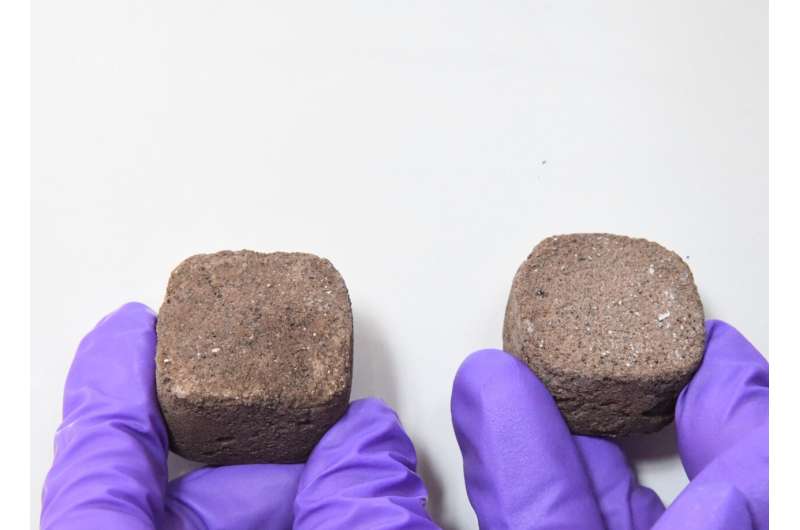"The bacteria seep deep into the pore spaces, using their own proteins to bind the particles together, decreasing porosity and leading to stronger bricks," says Aloke Kumar, Associate Professor in the Department of Mechanical Engineering at IISc, one of the senior authors of the paper.
The research group had previously worked on making bricks out of lunar soil, using a similar method. However, the previous method could only produce cylindrical bricks, while the current slurry-casting method can also produce bricks of complex shapes. The slurry-casting method was developed with the help of Koushik Viswanathan, Assistant Professor in the Department of Mechanical Engineering, IISc, whose lab works on advanced manufacturing processes. In addition, extending the method to Martian soil proved challenging. "Martian soil contains a lot of iron, which causes toxicity to organisms. In the beginning, our bacteria did not grow at all. Adding nickel chloride was the key step in making the soil hospitable to the bacteria," explains Kumar.
The group plans to investigate the effect of Mars' atmosphere and low gravity on the strength of the space bricks. The Martian atmosphere is 100 times thinner than Earth's atmosphere, and contains more than 95% carbon dioxide, which may significantly affect bacterial growth. The researchers have constructed a device called MARS (Martian AtmospheRe Simulator), which consists of a chamber that reproduces the atmospheric conditions found on Mars in the lab.
The team has also developed a lab-on-a-chip device that aims to measure bacterial activity in micro-gravity conditions. "The device is being developed keeping in mind our intention to perform experiments in micro-gravity conditions in the near future," explains Rashmi Dikshit, a DBT-BioCARe Fellow at IISc and first author of the study, who had also previously worked on the lunar bricks. With ISRO's help, the team plans to send such devices into space, so that they can study the effect of low gravity on the bacterial growth.
"I'm so excited that many researchers across the world are thinking about colonizing other planets," says Kumar. "It may not happen quickly, but people are actively working on it."
Explore further



